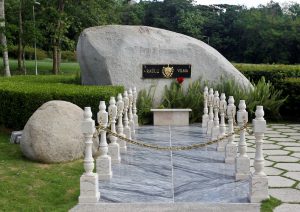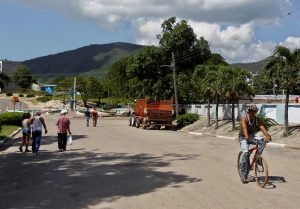
Santiago de Cuba, Cuba, Jan 2 (EFE).- Hidden away among the mountains of the Sierra Maestra in eastern Santiago de Cuba province, the town of Segundo Frente is prospering today under the tutelage of former Cuban President Raul Castro, who has selected it as his own little hometown of sorts, visiting it several times a year and preparing his final resting place there.
The agricultural community of 40,000 is known as “Raul’s town,” given that the late Fidel Castro’s younger brother established his headquarters there during the Cuban Revolution that brought the Castros to power 60 years ago.
After the triumph of the Revolution on Jan. 1, 1959, Raul became the godfather for the settlement that had sprung up around his command post, representing it in the Cuban parliament and visiting it regularly to supervise construction projects and preside at various events.
That means that the residents of the remote town come into contact with the octogenarian general much more often that Havana residents do, since even though Castro lives in the Cuban capital, he rarely is seen there in public.

The recent renovation of the town, including the opening of a four-star hotel and the undertaking of several social projects, seems to corroborate the versions claiming that Raul will retire to Segundo Frente after he gives up the leadership of the Cuban Communist Party (PCC) in 2021.
At present, however, due to the secrecy surrounding Raul’s personal life, Segundo Frente residents don’t know for sure if they will have him as a neighbor, but if it happens – they say – “it would be a great honor for the town.”
“He’s already visited us about five times this year. The people are very happy when they see him,” local PCC chief Roger Perez told EFE.
Raul’s wife, Vilma Espin – with whom he fell in love in Segundo Frente during the Revolution – died in 2007 and is buried in a mausoleum built a few meters from his old command post, and for the past decade there has been a second burial niche there labeled “Raul” where the former president’s remains will rest after his own death.
Raul’s tomb is very similar to that of his brother Fidel (1926-2016) in the Santa Ifigenia Cemetery in Santiago de Cuba, although the younger brother selected a more intimate and out-of-the-way site.
The local cemetery also contains the graves of more than 200 members of the Frank Pais Second Front of the Castros’ rebel army and Raul often visits the grave of his wife of some 40 years privately, “to talk with Vilma, without anyone around,” according to one of the caretakers.
